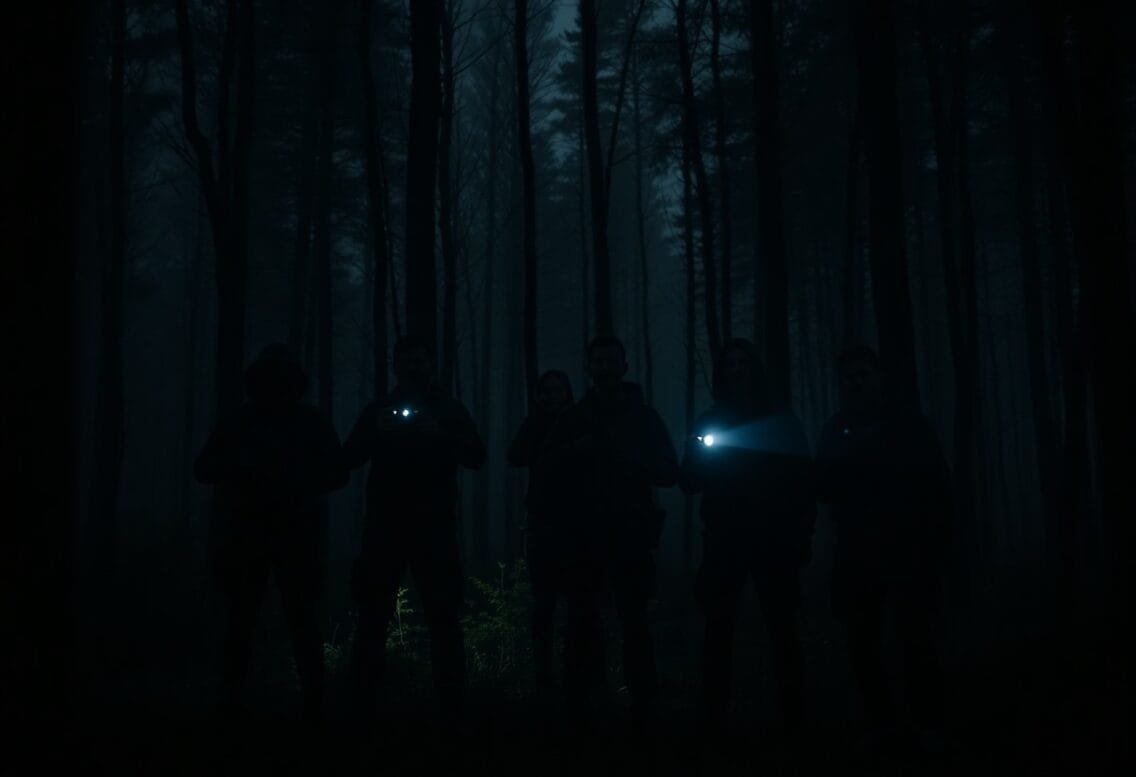Top Multiplayer Horror Games & How to Win

Many gamers love the adrenaline rush that comes with multiplayer horror games, offering thrilling experiences shared with friends or strangers. In this guide, you will discover the top multiplayer horror games that will keep you on the edge of your seat, along with strategies to help you survive and conquer your challenges. Whether you are battling against terrifying monsters or solving chilling mysteries, you’ll find tips and insights that will enhance your gameplay, ensuring your team remains strong and makes it out alive.
Key Takeaways:
- Teamwork: Prioritize collaboration with your team to succeed against horror challenges.
- Strategy: Develop a solid game plan that includes tasks and roles for each player to maximize effectiveness.
- Communication: Utilize voice or text chat to share information and coordinate actions swiftly under pressure.
- Adaptability: Stay flexible and be ready to adjust your approach based on the evolving game environment and enemy behaviors.
- Understanding Mechanics: Familiarize yourself with specific game mechanics to exploit weaknesses and enhance survival chances.
1. Choose games with strong multiplayer communities and support.
2. Communicate effectively with your team during gameplay.
3. Learn individual roles and strengths of characters.
4. Explore maps thoroughly to find resources and escape routes.
5. Stay calm under pressure; panic leads to mistakes.
6. Analyze past rounds to improve strategies for next matches.
Types of Multiplayer Horror Games
The world of multiplayer horror games is diverse, offering various experiences that test your survival skills. Here’s a breakdown of the main types:
| Type | Description |
|---|---|
| Cooperative | Work with others to survive against menacing forces. |
| Competitive | Face off against other players in a terrifying setting. |
| Asymmetrical | One player is a powerful antagonist, while others try to survive. |
| Survival | Manage resources while navigating through scary environments. |
| Escape Room | Work together to solve puzzles and escape an eerie setting. |
Knowing the types will enhance your gaming experience and help you choose the right game for your group.
Cooperative Horror Games
Games in this category require teamwork to overcome frightening obstacles and enemies. Your success heavily relies on effective communication and strategy with your teammates. The immersive atmosphere creates a bond as you navigate terrifying encounters together, making victories more satisfying.
Competitive Horror Games
Now, competitive horror games pit you against other players, each vying for survival amidst fearsome challenges. These games create intense experiences as you outsmart opponents while evading deadly threats.
Understanding the competitive landscape in horror games allows you to adopt strategies that can enhance your chances of winning. Focus on stealth, intelligence, and quick decision-making, leveraging your environment. Pay attention to your opponents’ movements, anticipating their actions, and use cunning tactics to outmaneuver them in this chilling cat-and-mouse game.
Key Factors in Winning Multiplayer Horror Games
Even the most thrilling multiplayer horror games can lead to an unexpected defeat if you don’t understand what it takes to win. Key factors include:
- Understanding game mechanics
- Strong team communication
- Strategic resource management
- Adapting to enemy behavior
- Staying calm under pressure
This knowledge empowers you to face the challenges that await you in the dark corners of horror gaming.
Game Mechanics
Horror multiplayer games often feature unique mechanics that can significantly impact your gameplay experience. Familiarize yourself with the specific rules and systems within the game, such as how entities detect players, environmental hazards, and any tools or weapons at your disposal. Mastering these elements helps you avoid deadly traps and leverage the gameplay to your advantage.
Team Dynamics
Mechanics in multiplayer horror games extend beyond individual skills to how well your team works together. Effective coordination and collaboration among players can turn the tide in your favor.
Winning in multiplayer horror games hinges on solid team dynamics, such as clear communication and strategic planning. Share information about enemy locations, resource availability, and health statuses. Utilize roles based on each player’s strengths to create a cohesive unit. Do not forget, a united front can help you overcome the various horrors the game throws your way.
Tips for Success in Multiplayer Horror Games
Many players find success in multiplayer horror games by following a few key strategies. Here are some tips that can enhance your gameplay experience:
- Stay aware of your surroundings.
- Keep noise to a minimum.
- Work cooperatively with teammates.
- Utilize items efficiently.
- Understand each game’s objectives.
Knowing these strategies will improve your chances of survival and success in terrifying environments.
Communication Strategies
Even in the most intense horror situations, effective communication with your teammates can make all the difference. Utilize voice chat or in-game messaging to relay important information, such as enemy locations or resource needs. Be concise, but clear, and encourage your team to do the same. Recall, sharing information quickly can save lives.
Character Selection
On selecting your character, consider their unique strengths and weaknesses in relation to the game. Some characters might excel in stealth, while others could be better suited for combat or healing roles. Choose one that complements your playstyle and the strategies of your team.
To maximize your effectiveness in multiplayer horror games, take time to understand the character abilities and how they can assist your team. Picking a character that aligns with your team’s composition enhances your chances of survival. Aim for a balance—having a mix of roles can create a well-rounded team dynamic, allowing you to tackle challenges effectively together.
Step-by-Step Guide to Playing Popular Multiplayer Horror Games
To effectively engage with multiplayer horror games, you should follow systematic steps to enhance your experience. This guide will walk you through the imperative phases from setup to strategic play, ensuring you are well-prepared to face the thrilling challenges these games present.
| Phase | Description |
|---|---|
| Game Setup and Initialization | Prepare your game settings and ensure optimal performance for an immersive experience. |
| Strategies During Gameplay | Employ effective tactics to maximize your chances of survival and success. |
Game Setup and Initialization
Initialization is imperative for a smooth gaming experience. Start by checking your system requirements to ensure compatibility. Next, configure your graphics and audio settings for optimal performance, and customize controls to suit your play style. Finally, calibrate in-game settings, such as sensitivity and field of view, to enhance your reaction times and overall gameplay experience.
Strategies During Gameplay
Assuming you’re entering into these horror realms, it’s important to devise effective strategies to outlast your competitors. Focusing on teamwork, utilizing communication tools, and understanding character strengths is paramount for success and survival. Always stay aware of your surroundings and maintain a balance between aggression and caution.
Multiplayer horror games thrive on unpredictability; thus, developing a flexible strategy can be beneficial. Lean on your teammates for support and prioritize objectives that enhance your team’s survival. Develop a keen sense of timing and adapt your tactics based on in-game scenarios, whether it’s to evade a pursuer or secure imperative resources. By staying composed and aware, you’ll significantly improve your chances of victory.
Pros and Cons of Multiplayer Horror Games
Despite the thrilling experience multiplayer horror games offer, it’s crucial to weigh their advantages and disadvantages. Understanding these factors can help you make an informed decision about your gaming choices.
| Pros | Cons |
|---|---|
| Enhances teamwork skills | Potential for toxic behavior |
| Fosters a sense of community | Interruption from players |
| Increases replayability | Unequal skill levels |
| Exciting shared scares | Dependence on internet connection |
| Varied gameplay experiences | Longer wait times for matches |
Benefits of Playing
There’s a unique thrill in sharing the horror experience with friends. Multiplayer horror games allow you to work together to solve challenges, enhancing communication and cooperation skills. They also create memorable moments as you face terrifying scenarios together, making each play session exciting and different.
Drawbacks to Consider
On the flip side, multiplayer horror games can expose you to negative experiences. While playing with others can be rewarding, it’s not uncommon to encounter toxic players, which can lead to frustration and a less enjoyable experience.
A common issue in multiplayer games is the reliance on team dynamics. If you find yourself paired with less skilled teammates, it can hinder your performance and diminish the overall enjoyment of the game. Additionally, unexpected disconnects or lagging can interrupt your experience and prevent you from fully immersing in the horror atmosphere.
Conclusion
To wrap up, engaging in top multiplayer horror games can be thrilling, but your success hinges on strategic planning and teamwork. By understanding each game’s mechanics and communicating effectively with your teammates, you increase your chances of survival and victory. Embrace the challenge of facing terrifying foes head-on, while utilizing your skills to outsmart and outmaneuver them. With dedication and practice, you’ll not only enhance your gaming experience but also become a formidable player in the frightening worlds you explore.
FAQ
Q: What are some popular multiplayer horror games to consider playing?
A: Some well-known multiplayer horror games include “Dead by Daylight,” “Phasmophobia,” “The Forest,” “Friday the 13th: The Game,” and “Devour.” Each of these games offers unique gameplay elements, such as asymmetrical gameplay in “Dead by Daylight” and cooperative survival in “Phasmophobia.” It’s important to explore different games to find what suits your gaming style best.
Q: How can I effectively communicate with my team in multiplayer horror games?
A: Effective communication is vital in multiplayer horror games. Use voice chat for real-time strategies and ensure to share information about enemy locations, resources, or hazards. Establish roles within your team to streamline gameplay, such as designating a lookout or a resource gatherer. Additionally, avoid talking over each other to ensure that important details aren’t missed.
Q: What are some strategies for surviving in a multiplayer horror game?
A: Survival strategies can vary by game, but generally, stay aware of your surroundings and avoid unnecessary noise that could attract the attention of enemies. Stick with your team for added protection, but don’t bunch up too closely. Utilize stealth gameplay when possible and familiarize yourself with maps to find escape routes quickly. Gathering resources efficiently can also enhance your survival chances.
Q: Are there specific character roles in multiplayer horror games that I should focus on?
A: Yes, many multiplayer horror games feature distinct character roles that can greatly impact gameplay. For instance, in “Dead by Daylight,” survivors can take on roles based on their perks, such as being a healer or a distraction. In “Phasmophobia,” players can be designated as investigators or equipment handlers. Understanding your character’s strengths and weaknesses can help you make more informed decisions during gameplay.
Q: How can I improve my skills in multiplayer horror games?
A: To enhance your skills in multiplayer horror games, practice regularly to become familiar with game mechanics and maps. Watching tutorials, streams, or gameplay videos can provide insights into advanced strategies and techniques. Join gaming communities or forums to exchange tips and experiences with fellow gamers. Lastly, be open to feedback from teammates to refine your approach and game tactics.





